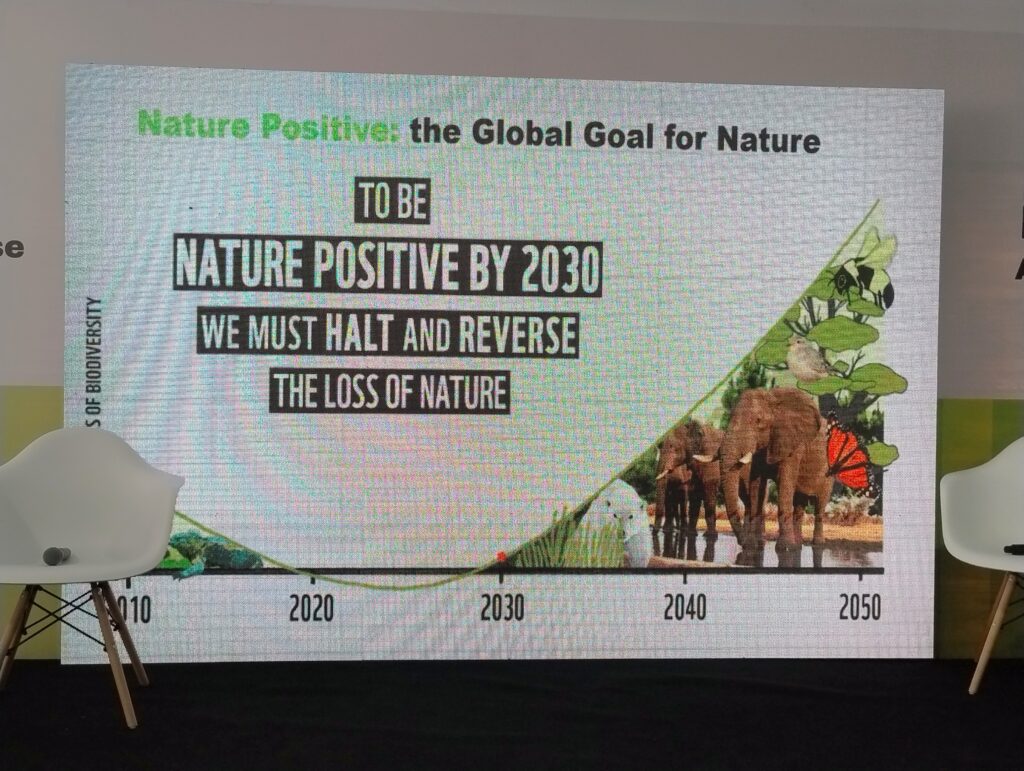It is time for the corporate and financial sectors to include environmental stock degradation in their investment risk profile

Daniele Cesano, CEO LandPrint – dcesano@landprint.earth
Cali, Colombia – October the 29th, 2024.
After two weeks of intense negotiations, COP16 on Biodiversity concluded without a definitive agreement on implementing a “Nature’s Agreement.” Following hours of deliberation in the final plenary session, we are leaving Cali with unresolved issues for future discussion to “make peace with nature”—the central theme of the conference. We find ourselves in a post-war era where humanity has long been fighting against nature, failing to recognize it as our greatest ally in sustaining life and well-being.
Two key points emerged from the summit in my opinion:
1. Securing Biodiversity Funding: Achieving the necessary funding for biodiversity preservation is highly unlikely under current conditions. Although several historic decisions were made—such as recognizing indigenous communities as biodiversity ‘guardians’—significant obstacles remain. One of the primary goals at COP16 was to secure $200 billion annually by 2030, as outlined in the Global Biodiversity Framework from COP15. However, negotiations faltered when European delegations opposed a package on resource mobilization, digital sequence information (DSI) use, and target monitoring. This funding challenge comes as no surprise, given that the capacity of current funding mechanisms has fallen short of meeting the Official Development Assistance (ODA) target of 0.7% of Gross National Income, with developed countries contributing only 0.33% and increasing requirements to finance climate adaptation and mitigation. Securing additional government funding for biodiversity, while critically needed, is hindered by the absence of scalable, economically viable models for investment in natural assets.
2. Digital Sequence Information (DSI): If biopiracy once involved physically taking valuable plant or seed specimens to exploit abroad, modern concerns lie in the digital coding of genetic information, which is stored in international repositories and used to create new products. DSI involves using this genetic sequencing commercially and raises complex debates, especially between wealthy nations, with robust pharmaceutical sectors, and biodiversity-rich but economically developing countries like Brazil and Colombia. A significant development was the establishment of the Cali Fund, a multilateral financial mechanism intended to support biodiversity protection, with half of its disbursements directed to indigenous and local communities for conservation and traditional knowledge sharing.
The Importance of Nature Valuation and NatureTech

COP16 highlighted the critical role of integrating nature valuation into policy, corporate, and financial strategies. I have observed in numerous events that accurate measurement, metrics, and data accessibility are essential in making nature valuation a reality. Nature valuation involves assessing the economic value of ecosystems—forests, wetlands, and marine areas—based on the ecosystem services they provide, such as carbon sequestration, water purification, and soil health. Despite their critical economic role, these ecosystems are often undervalued in financial and policy decisions.
In this context, NatureTech companies are increasingly central. A recent report by the NatureTech Collective reveals significant progress in this field, though the focus remains on carbon and biodiversity markets rather than on risk assessment and tailored valuation methods that link natural asset degradation to investment risks. There exists a contradiction where science and the economy both recognize the importance of nature’s services to economic stability, yet corporate and financial systems are reluctant to factor these services into their risk frameworks, often transferring the risk burden onto landowners and farmers. This disconnect underscores the need for a new approach that values natural capital across sectors.
Challenges to Mainstreaming Nature Valuation
While nature valuation is increasingly recognized as crucial, mainstreaming it across sectors faces several barriers:
1. Lack of Standardized Valuation Metrics: The absence of universal standards for quantifying natural capital complicates widespread adoption by businesses and governments.
2. Data and Measurement Limitations: Reliable data on ecosystem health, biodiversity, and other natural assets are still lacking, which hinders accurate valuation.
3. Short-Term Economic Pressures: Businesses often keep prioritizing short-term gains, while the benefits of nature valuation primarily serve long-term resilience, making these investments harder to justify.
4. Policy and Regulatory Gaps: Even with international commitments, translating them into local policies that incentivize nature-positive practices often lags.
5. Lack of a Comprehensive Risk Analysis Linking Natural Stocks to Financial Returns: This in my opinion is probably the key point and a major area where LandPrint starts operating. Although environmental stocks underpin 50% of global GDP, corporate supply chains have yet to fully integrate this understanding. Financial and corporate sectors lack a proactive risk analysis framework that connects natural asset health to financial returns and natural capital valuation. As a result, businesses take a reactive stance, awaiting frameworks like the Taskforce on Nature-related Financial Disclosures (TNFD) and the International Sustainability Standards Board (ISSB) rather than taking immediate action. To protect their bottom lines, companies must move beyond waiting, as long-term financial stability depends on ecological resilience.
Innovative Approaches to Integrating Nature Valuation
In response to these challenges, innovative solutions are emerging, especially in the NatureTechs world. Companies (like LandPrint and Bioflore) are developing data infrastructures to help integrate nature valuation into corporate and financial frameworks. Such platforms enable stakeholders to measure environmental benefits like carbon sequestration, biodiversity preservation, and soil health improvement through advanced ecosystem analysis. Additionally, global frameworks like the International Financial Reporting Standards (IFRS) S1 and S2 now require public companies to report on sustainability, encouraging the integration of environmental metrics in financial reporting.
Implications for Corporations and Policy
Mainstreaming nature valuation empowers companies and governments to incorporate biodiversity and ecosystem health into their strategies, laying the groundwork for green financing options, such as green bonds or nature-positive investments, supported by accurate natural asset measurement. Incorporating nature valuation is not just beneficial but essential, aligning economic growth with ecological integrity to ensure that development does not compromise the planet’s health.
COP16 laid the foundation for this shift, but now it is up to today’s leaders to transform this vision into actionable steps that safeguard and value nature for future generations.
